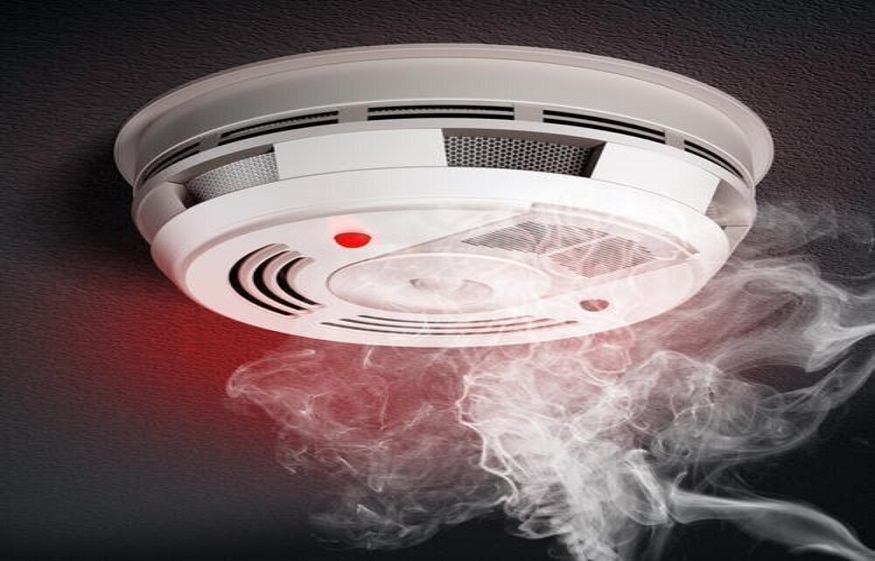When it comes to fire safety, choosing the right smoke alarm is a critical decision. Photoelectric smoke alarms have gained recognition for their efficiency and reliability compared to conventional smoke alarms. This guide will explore the unique benefits of photoelectric technology, discuss various types of smoke alarm fittings, and provide insights into the best placement for optimal protection.
Why Photoelectric Smoke Alarms Are a Smarter Choice
Photoelectric smoke alarms are designed to detect smouldering fires, which often produce more smoke and fewer flames. Unlike conventional ionisation alarms that respond better to flaming fires, photoelectric alarms use light sensors to detect smoke particles in the air. This makes them faster and more effective at identifying slow-burning fires, which are often the most dangerous.
Key advantages of photoelectric smoke alarms include:
- Quicker Response to Smouldering Fires: They activate sooner in cases of fires caused by overheated electrical wiring or slow-burning furniture.
- Reduced False Alarms: Common household activities like cooking or showering can trigger conventional alarms. Photoelectric alarms are less likely to be affected by these everyday occurrences.
- Environmentally Friendly: Unlike ionisation alarms, photoelectric models don’t rely on radioactive materials, making them safer for disposal.
For homeowners and businesses looking to upgrade, trusted suppliers like those offering PSA smoke alarm wholesale options ensure reliable and affordable solutions.
Types of Smoke Alarm Fittings
Understanding the types of alarm fittings available helps in choosing a model suited to specific environments. Here are the most common fittings:
- Hardwired Alarms: These alarms are connected directly to a building’s electrical system and often come with battery backups to ensure functionality during power outages. Hardwired models are ideal for permanent installations in homes and commercial properties.
- Battery-Operated Alarms: These are simple to install and portable. They’re a great choice for renters or temporary spaces, offering flexibility without compromising safety.
- Interconnected Systems: In these systems, all alarms in a building are linked. If one alarm is triggered, the others also sound, providing comprehensive coverage.
- Smart Smoke Alarms: Featuring Wi-Fi connectivity, these alarms send alerts to your phone, allowing for remote monitoring and instant notifications.
Reliable providers, such as PSA smoke alarm wholesale near me distributors, offer a range of options suitable for different needs.
Where to Place Smoke Alarms
Proper placement is key to maximising the effectiveness of your smoke alarm system. Follow these guidelines for optimal coverage:
Residential Homes
- Bedrooms: Place alarms inside each bedroom and outside sleeping areas, ensuring they can wake occupants in the event of a fire.
- Living Areas: Install alarms in common spaces like living rooms or hallways to cover high-traffic zones.
- Kitchens: Although false alarms are less frequent with photoelectric models, it’s best to position alarms at least three metres from cooking appliances to avoid unnecessary activations.
- Basements and Attics: These areas are often overlooked but can pose significant fire risks.
Commercial Spaces
In businesses, smoke alarms should be strategically located to cover areas such as:
- Exits and Hallways: These are critical paths for evacuation. Suppliers specialising in fire safety, such as exit light wholesale options, often complement smoke alarm systems for comprehensive safety.
- Workstations and Meeting Rooms: Installing alarms in places with heavy electronic equipment or flammable materials helps minimise risks.
- Storage Rooms: These spaces can house combustible items, making alarm coverage essential.
Integrating Smoke Alarms with Emergency Lighting
Emergency lighting is a crucial component of a fire safety system. In case of a power outage or fire, these lights guide occupants to safety. Combining smoke alarms with solutions like emergency light wholesale fittings ensures a cohesive approach to safety, particularly in commercial buildings.
Maintaining Smoke Alarms for Long-Term Reliability
Installing smoke alarms is only the first step. Regular maintenance ensures their reliability over time.
- Test Monthly: Check alarms by pressing the test button to ensure they function properly.
- Replace Batteries Annually: For battery-operated models, replace batteries yearly or when prompted by low-battery chirps.
- Clean Regularly: Dust and debris can interfere with performance. Gently clean alarms every six months.
- Upgrade When Needed: Replace alarms every ten years or as recommended by the manufacturer.
Final Thoughts
Photoelectric smoke alarms offer significant advantages over traditional models, particularly in detecting smouldering fires with speed and accuracy. By understanding the types of alarm fittings available and following best practices for placement, you can create a safer environment at home or in the workplace. When combined with effective emergency lighting and regular maintenance, these systems play a vital role in safeguarding lives and property.
Whether you’re updating your home’s safety measures or managing a commercial property, trusted suppliers like those offering PSA smoke alarm wholesale and emergency light wholesale options provide everything you need for a comprehensive fire safety strategy. Don’t compromise when it comes to safety—choose quality systems designed to perform when it matters most.

